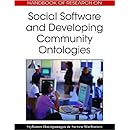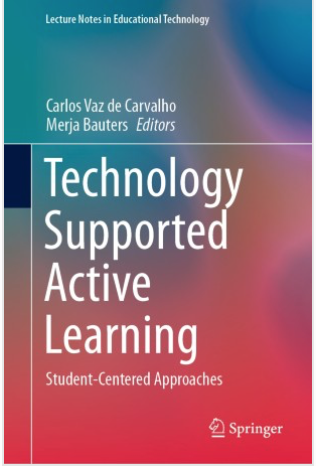There was a reference to Ilyenkov and significances as Soviet version of affordances in one paper of artifact ecologies that i wanted to check out for a while ago.
The ideal form is a form of a thing, but a form that is outside the thing, and is to be found in man as a form of his dynamic life activity, as goals and needs. Or conversely, it is a form of man’s life activity, but outside man, in the form of the thing he creates. “Ideality” as such exists only in the constant succession and replacement of these two forms of its “external embodiment” and does not coincide with either of them taken separately. It exists only through the unceasing process of the transformation of the form of activity – into the form of a thing and back – the form of a thing into the form of activity (of social man, of course).
Try to identify the “ideal” with any one of these two forms of its immediate existence – and it no longer exists. All you have left is the “substantial”, entirely material body and its bodily functioning. The “form of activity” as such turns out to be bodily encoded in the nervous system, in intricate neuro-dynamic stereotypes and “cerebral mechanisms” by the pattern of the external action of the material human organism, of the individual’s body. And you will discover nothing “ideal” in that body. The form of the thing created by man, taken out of the process of social life activity, out of the process of man-nature metabolism, also turns out to be simply the material form of the thing, the physical shape of an external body and nothing more. A word, taken out of the organism of human intercourse, turns out to be nothing more than an acoustic or optical phenomenon. “In itself” it is no more “ideal” than the human brain.
And only in the reciprocating movement of the two opposing “metamorphoses” – forms of activity and forms of things in their dialectically contradictory mutual transformations – DOES THE IDEAL EXIST.
One side-thought from it is that as different cultures construct their idealities to the same boundary objects, basically the ideality for certain objects is never disappearing, just changing. The tools or mediators, what the ideality actually represents, can objectively exits out of their creator’s culture due to being boundary objects and forming ideality to some other cultures as well.
This makes all tools boundary objects as long as several cultures hold and develop the ideality in action.
But then i came to this paper today.
The Turner paper classifies affordances into simple Gibson’s affordances and complex affordances that embody history and practice.
Very interesting is Turner’s approach to consider boundary objects as objects that are useful for different communities, and thus boundary objects represent the culturally emergent affordances.
He makes a kind of leap in his conclusion: affordances are boundary object between ‘use’ and ‘design for use’ – designed artefacts are boundary objects both between and within the communities of practice of designers and users.
He also sees that basically use, context and affordance is the same thing and refers to the elements that are part of activity systems.
It seems that very often we need to use some label, but all the labels: affordance, context, ideality are so meaning-laden in certain contexts, and a lot of confusion emerges if our theory is changed but we use still the words from the previous theories.
Affordance as context
Phil Turner
Interacting with Computers 17 (2005) 787–800
Significances are described as real and objective, but dependent on us as they are a product of our purposive, sensuous work.
Hartson (2003) has proposed a four-fold division of (simple) affordance for the purposes of designing for interaction. These four categories are (a) cognitive affordance; (b) physical affordance; (c) sensory affordance and finally, (d) functional affordance.
‘Real affordances are not nearly as important as perceived affordances; it is perceived affordances that tell the user what actions can be performed on an object and, to some extent, how to do them’ (Norman, 1988).
Perceived affordances are ‘often more about conventions than about reality’ (Norman, 1999, 124)
Turner and Turner (2002) create an explicit three layer model of affordance:
– ‘basic level’ equating with simple usability/ergonomics,
– a ‘middle layer’ matching user tasks (and/ or) embodiment and finally,
– a ‘top level’ corresponding to the purpose of the activity
for which ‘cultural affordance’ are appropriate.Cole (1996) notes that mediating artefacts embody their own ‘developmental histories’ which is a reflection of their use. That is, these artefacts have been manufactured or produced and continue to be used as part of, and in relation to, intentional human actions.
Boundary objects (Star, 1989) are resources or artefacts which support the work of separate communities such as different departments within an organisation or even between very different communities of practice. To be useful by these different communities they must be sufficiently flexible to be used in different ways, by different people for different purpose in a range of contexts. The term ‘boundary object’ is, of course, primarily descriptive rather than a design imperative as they are seen to develop or ‘evolve’ within and between communities by embodying custom and practice.
Ilyenkov begins his argument by identifying two classes of nonmaterial phenomena namely:
1. mental phenomena such as thoughts, beliefs and feelings and
2. phenomena that are neither material nor mental—meaning and values, such as goodness.Through human activity we idealise our world (i.e. endow it with meaning) and in so doing we also endow it with properties that come to exist completely independently of us.
As Ilyenkov puts it:
Ideality is a characteristic of things, but not as they are defined by nature, but by labour, the transforming, form-creating activity of social beings, their aim-mediated, sensuously objective activity.
The ideal form is the form of a thing created by social human labour. Or conversely, it is the form of labour realized [osushchestvlennyi] in the substance of nature, ‘embodied’ in it, ‘alienated’ in it and ‘realized’ [realizovannyi] in it, and thereby confronting its very creator as the form of a thing or as a relation between things, which are placed in this relation (which they otherwise would not have entered) by human beings, by their labour (Ilyenkov, 1977: 157).Ideal properties such as significances are thus real, objective but not independent of us as they are products of meaning-endowing in human activity.
The ideal exists in the collective not the individual mind.
While social life is a product of the collective, it is experienced by individuals as a set of given rules, practices, tools and artefacts.Through purposive use objects acquire significance.
Ideality is like a stamp or inscription on the substance of nature by social human activity.
A significance makes a thing knowable.Ilyenkov notes that activity is the source of the world we inhabit and the principal expression of how we inhabit it.
Some significance has to be attached to the thing through the process of the object’s incorporation into the sphere of human activity which is not necessarily true of an affordance—particularly simple affordances.
Objects acquire this ideal content not as the result of being accessed by an individual mind, but by the historically developing activities of communities of practice.
In conclusion, from a holistic or phenomenological perspective, affordance, use and context are one. From a design perspective affordance is not an intangible, elusive property of interactive systems, it might better be thought of as a boundary object between ‘use’ and ‘design for use’ .
Cole, M., 1996. Cultural Psychology. Harvard University Press.
Ilyenkov, E. (1977) Problems of Dialectical Materialism (Translated by A. Bluden). Progress Publishers. Also available from http://www.marxists.org/archive/ilyenkov/works/ideal/ideal.htm.
Norman, D.A., 1988. The Psychology Of Everyday Things. Basic Books, NY.
Star, S.L., 1989. The structure of ill-structured solutions: boundary objects and heterogeneous distributed problem solving. In: Grasser, L., Huhns, M. (Eds.), Distributed Artificial Intelligence. Pitman, London.
Turner, P., Turner, S., 2002. An affordance-based framework for CVE evaluation, People and Computers XVII— The Proceedings of the Joint HCI-UPA Conference 2002 pp. 89–104.









